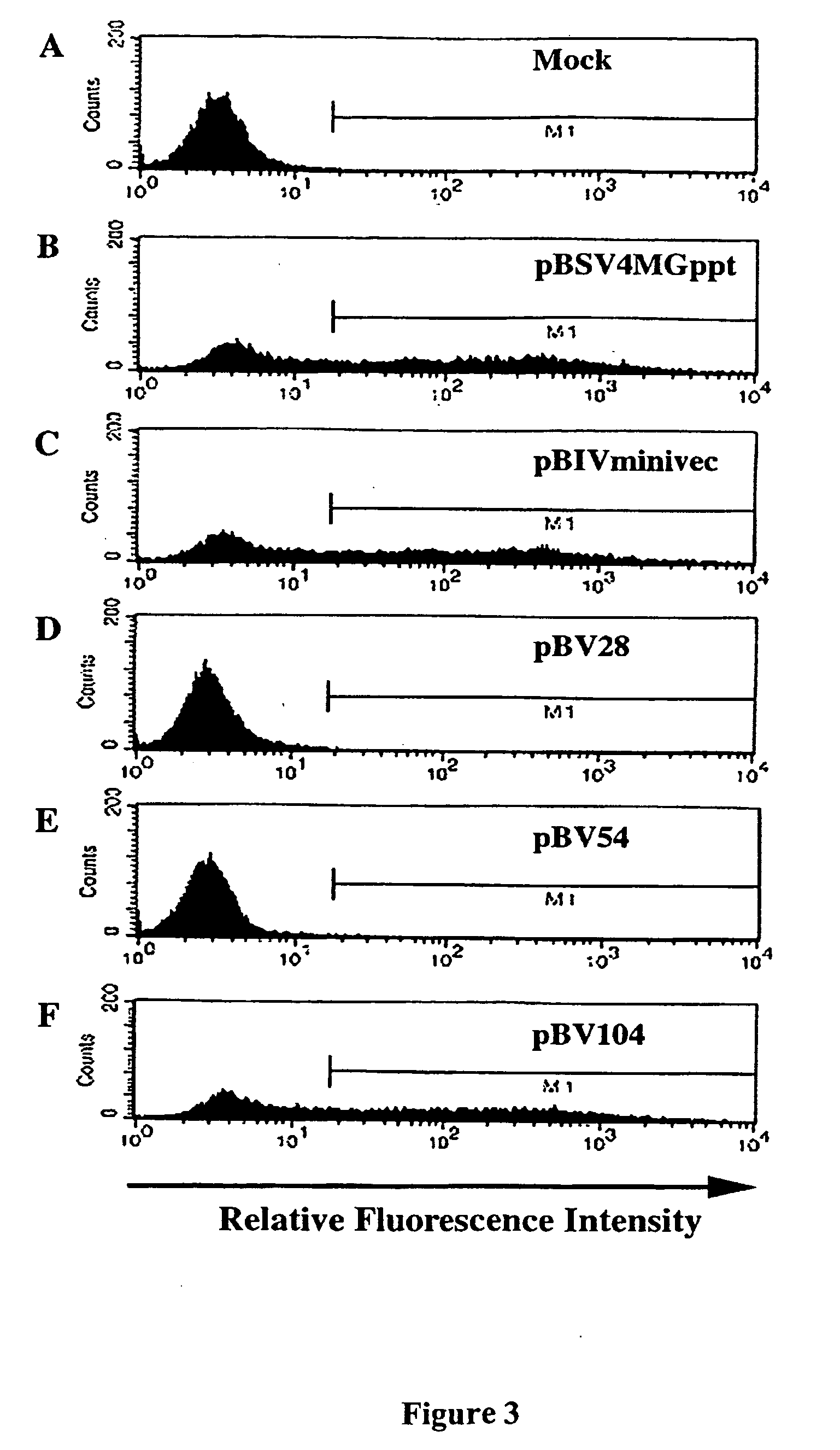Recombinant bovine immunodeficiency virus based gene transfer system
a technology of recombinant bovine immunodeficiency virus and gene transfer system, which is applied in the field of new recombinant lentiviral vectors, can solve the problems of reducing the ability to generate replication competent viral particles during this process, reducing the frequency of recombination, and reducing the ability to co-package and subsequent transfer multiple components of wildtype viral genomes. , to achieve the effect of increasing viral titer, reducing homology, and reducing the frequency
- Summary
- Abstract
- Description
- Claims
- Application Information
AI Technical Summary
Benefits of technology
Problems solved by technology
Method used
Image
Examples
example 1
[0286] SEQ ID NO:1 shows the DNA sequence of bovine immunodeficiency virus provirus.
example 2
Plasmid Construction
[0287] The packaging construct was created by ligating the necessary constructs of BIV into the mammalian expression plasmid, pCI (Promega, Madison, Wis.). The major splice donor (MSD) site and the coding sequence for gag and pol was isolated as a 4485 base pair BspEI-BstUI fragment from the BIV provirus (Garvey, et al. Virology. April 1990;175(2):391-409, Genbank Accession No. NC—001413and M32690). This fragment was blunt ended by Klenow treatment, and ligated to pCI linearized with EcoRI and also blunt ended by Klenow treatment to create pCIigp. Next, PCR amplification of the BIV provirus with primers RRE65′NotI (5′-AAAGCGGCCGCTCCGGTGGATTCTTGTAAAGG-3′) (SEQ ID NO:2) and RRE63′NotI (5′-AAAGCGGCCGCGGCGCCTCCAAGTATGAAACTC-3′) (SEQ ID NO:3) created the minimal RRE fragment. This 344 base pair PCR fragment was digested with NotI and ligated to pCIigp also digested with NotI and phosphatase (CIP) treated. The plasmid created is named pCIigpRRE, and was used in the fo...
example 3
3.1
[0294] Referring now to FIG. 1, there is shown a schematic representation of the BIV three component gene transfer system containing: (i) the packaging construct, (ii) the transfer vector construct, and (iii) the viral surface protein gene construct. The plasmid construction for the packaging construct pBIVminipack and the transfer vector construct pBIVfinalvec were described in Example 2. The packaging construct, pBIVminipack, contains only the CMV immediate early promoter driving the BIV gag / pol coding sequence, followed by the fused coding sequence for rev, the minimal RRE, and finally an SV40 polyadenylation signal. There still remains the MSD site upstream of the start of gag, and the splice acceptor (SA) site for rev. The transfer vector construct, pBIVfinalvec, has a CMV promoter followed by R, U5, UTR, cPPT, RRE, an internal promoter driving the transgene, modified U3 (SIN), R, and U5. (CMV: CMV early promoter; Δφ: Packaging signal sequence deletion; MSD: Major splice do...
PUM
| Property | Measurement | Unit |
|---|---|---|
| concentration | aaaaa | aaaaa |
| concentration | aaaaa | aaaaa |
| concentration | aaaaa | aaaaa |
Abstract
Description
Claims
Application Information
 Login to View More
Login to View More - R&D
- Intellectual Property
- Life Sciences
- Materials
- Tech Scout
- Unparalleled Data Quality
- Higher Quality Content
- 60% Fewer Hallucinations
Browse by: Latest US Patents, China's latest patents, Technical Efficacy Thesaurus, Application Domain, Technology Topic, Popular Technical Reports.
© 2025 PatSnap. All rights reserved.Legal|Privacy policy|Modern Slavery Act Transparency Statement|Sitemap|About US| Contact US: help@patsnap.com



